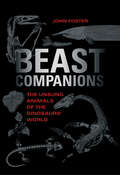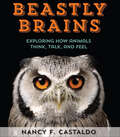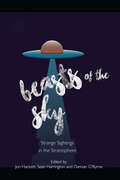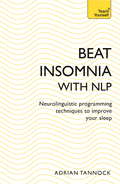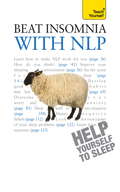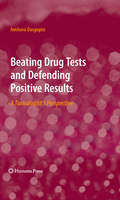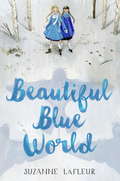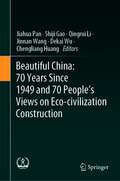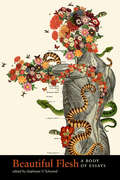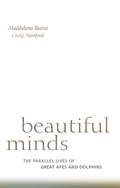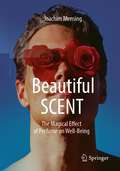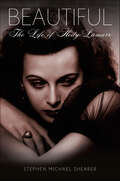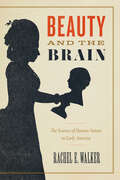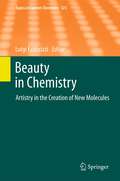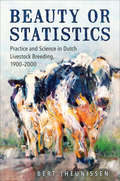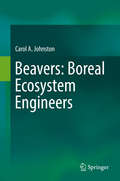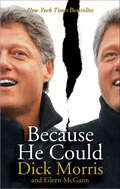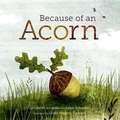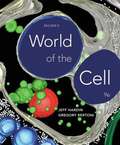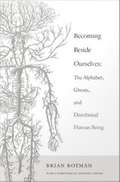- Table View
- List View
Beast Companions: The Unsung Animals of the Dinosaurs' World (Life of the Past)
by John FosterDespite their fame and reputation, dinosaurs represent only half the story of the Mesozoic Era. In Beast Companions: The Unsung Animals of the Dinosaurs' World, paleontologist John Foster explores the often-overlooked animals that coexisted with them. These ancient species, often equally remarkable as their dinosaur neighbors, can provide valuable insights into the biotic history of our planet. In some cases, these animals reveal just as much, if not more, about the extinct ecosystems of the time as the dinosaurs themselves.By drawing on a wealth of current and past discoveries, Foster embarks on a sweeping journey across 164 million years to visit the beast companions of the dinosaurs. Along the way, he examines fish, insects, the first frogs and salamanders, turtles, snakes and lizards, marine reptiles, crocodiles, pterosaurs, birds, mammals, and other animals of the Mesozoic Era.Beast Companions is a groundbreaking exploration of the story of these contemporaries of the dinosaurs that set the modern world in motion more than 200 million years ago
Beastly Brains: Exploring How Animals Think, Talk, and Feel
by Nancy F. Castaldo* "This eye-opening, cogent, and well-structured volume will enlighten students to both the richness of the animal kingdom and the nature of intelligence itself." — Booklist, STARRED review "Castaldo (The Story of Seeds) presents a thought-provoking look at the minds and perceptions of animals, as well as the way human understanding of the subject has evolved..." —Publishers Weekly "The information is conveyed in an enticing way that is sure to spark the interest of aspiring naturalists and researchers... A fascinating take on animal science for tween and teen zoologists." — School Library Journal —
Beasts of the Sky: Strange Sightings in the Stratosphere
by Jon Hackett Seán Harrington Damian O'ByrneOften the sky is conceptualised as a place of infinite possibilities, past the limits of our scientific explorations – and into the realms of our fiction and speculation; it is the site for our thoughts on the future, of the extra-terrestrial and beyond. Our representations in the media of space, sky and the infinite invariably mediate social and cultural anxieties that are current, looming and indeed threatening. These concerns range from the environment and fears of ecosystem collapse; the nuclear arms and space race; modernity, utopia and dystopia.Beasts of the Sky: Strange Sightings from the Stratosphere is the third and final collection in the Beasts series. This collection offers its readers an in-depth and interdisciplinary engagement with the skies above and their monstrous inhabitants, through critical readings of science fiction and popular culture – through the media of film, television, popular music, digital games and animation.Within this collection there are a multitude of convergent critical perspectives used to engage and explore fictional and real monstrosities of the sky and space in media. As with previous collections, Skies features chapters from a variety of academic perspectives; genre and narrative, textual analysis, spectatorship and reception, Tolkien studies, performance studies, digital media and indeed fiction are featured. Under examination are a wide range of narratives and media forms that represent, reimagine and create subjects as varied as the threat of nuclear weapons, sightings of UFOs, space exploration and flying creatures.
Beat Insomnia with NLP: Neurolinguistic programming techniques to improve your sleep
by Adrian TannockInsomnia is a problem that seriously affects millions of people. But Adrian Tannock has found that by using NLP techniques, people can hugely improve their sleeping experience.This book is full of practical, NLP-based guidance, which will help everyone from serious sufferers to people who have the occasional problems. These NLP techniques, combined with the friendly and straightforward approach of Teach Yourself, could hold the answer to your sleep problems.
Beat Insomnia with NLP: Neurolinguistic programming techniques to improve your sleep
by Adrian TannockInsomnia is a problem that seriously affects millions of people. But Adrian Tannock has found that by using NLP techniques, people can hugely improve their sleeping experience.This book is full of practical, NLP-based guidance, which will help everyone from serious sufferers to people who have the occasional problems. These NLP techniques, combined with the friendly and straightforward approach of Teach Yourself, could hold the answer to your sleep problems.
Beat Insomnia with NLP: Neurolinguistic programming techniques to improve your sleep
by Adrian TannockInsomnia is a problem that seriously affects millions of people. But Adrian Tannock has found that by using NLP techniques, people can hugely improve their sleeping experience. This book is full of practical, NLP-based guidance, which will help everyone from serious sufferers to people who have the occasional problems. These NLP techniques, combined with the friendly and straightforward approach of Teach Yourself, could hold the answer to your sleep problems.
Beat Insomnia with NLP: Teach Yourself
by Adrian TannockInsomnia is a problem that seriously affects millions of people. But Adrian Tannock has found that by using NLP techniques, people can hugely improve their sleeping experience. This book is full of practical, NLP-based guidance, which will help everyone from serious sufferers to people who have the occasional problems. These NLP techniques, combined with the friendly and straightforward approach of Teach Yourself, could hold the answer to your sleep problems.
Beating Drug Tests and Defending Positive Results: A Toxicologist’s Perspective
by Amitava DasguptaA majority of the Fortune 500 Companies implement some practice of workplace drug testing in their company policies. This practice was first initiated by President Ronald Reagan when he ordered federal agencies to drug test federal employees involved in sensitive positions as well as positions involving public safety. As a practicing toxicologist, Dr. Amitava Dasgupta is involved with the pre-employment drug testing at his own hospital and aptly shares his expertise in Beating Drug Tests and Defending Positive Results: A Toxicologist's Perspective, which covers all major issues concerning how people try to beat drug tests and defend positive test results. In each chapter, extensive references are cited so that readers can access more information on a particular topic that may interest them. The book will undoubtedly prove helpful to toxicologists, medical technologists, pathologists, human resources professionals and anyone interested in workplace drug testing.
Beautiful Blue World
by Suzanne LafleurBeautiful Blue World is a thrilling and moving story of children who become the key to winning a war. Sofarende is at war. For twelve-year-old Mathilde, it means food shortages, feuding neighbors, and bombings. Even so, as long as she and her best friend, Megs, are together, they’ll be all right. But the army is recruiting children, and paying families well for their service. If Megs takes the test, Mathilde knows she will pass. Megs hopes the army is the way to save her family. Mathilde fears it might separate them forever. This touching and suspenseful novel is a brilliant reimagining of war, where even kindness can be a weapon, and children have the power to see what adults cannot.From the Hardcover edition.
Beautiful Blue World
by Suzanne LafleurBeautiful Blue World is a thrilling and moving story of children who become the key to winning a war. Sofarende is at war. For twelve-year-old Mathilde, it means food shortages, feuding neighbors, and bombings. Even so, as long as she and her best friend, Megs, are together, they'll be all right. But the army is recruiting children, and paying families well for their service. If Megs takes the test, Mathilde knows she will pass. Megs hopes the army is the way to save her family. Mathilde fears it might separate them forever. This touching and suspenseful novel is a brilliant reimagining of war, where even kindness can be a weapon, and children have the power to see what adults cannot.From the Hardcover edition.
Beautiful China: 70 Years Since 1949 and 70 People’s Views on Eco-civilization Construction
by Jiahua Pan Shiji Gao Qingrui Li Jinnan Wang Dekai Wu Chengliang HuangThis book discusses and studies the basic course of ecological civilization construction in the 70 years since the founding of the People’s Republic of China and summarizes the experience and lessons. It contains 75 articles from 75 top experts and government officials in the field of ecological civilization policy-making and basic theory research in China, including Xi Jinping Thought on Ecological Civilization, ecological culture, green industry economy, environmental quality, legal system, ecological security and so on, so as to provide reference for understanding and studying the progress of ecological environment protection since the founding of China.
Beautiful Flesh: A Body of Essays
by Stephanie G’SchwindSelected from the country’s leading literary journals and publications—Colorado Review, Creative Nonfiction, Georgia Review, Prairie Schooner, Crazyhorse, The Normal School, and others—Beautiful Flesh gathers eighteen essays on the body, essentially building a multi-gender, multi-ethnic body out of essays, each concerning a different part of the body: belly, brain, bones, blood, ears, eyes, hair, hands, heart, lungs, nose, ovaries, pancreas, sinuses, skin, spine, teeth, and vas deferens. The title is drawn from Wendy Call’s essay “Beautiful Flesh,” a meditation on the pancreas: “gorgeously ugly, hideously beautiful: crimson globes embedded in a pinkish-tan oval, all nestled on a bed of cabbage-olive green, spun through with gossamer gold.” Other essays include Dinty W. Moore’s “The Aquatic Ape,” in which the author explores the curious design and necessity of sinuses; Katherine E. Standefer’s “Shock to the Heart, Or: A Primer on the Practical Applications of Electricity,” a modular essay about the author’s internal cardiac defibrillator and the nature of electricity; Matt Roberts’s “Vasectomy Instruction 7,” in which the author considers the various reasons for and implications of surgically severing and sealing the vas deferens; and Peggy Shinner’s “Elective,” which examines the author’s own experience with rhinoplasty and cultural considerations of the “Jewish nose.” Echoing the myriad shapes, sizes, abilities, and types of the human body, these essays showcase the many forms of the genre: personal, memoir, lyric, braided, and so on. Contributors: Amy Butcher, Wendy Call, Steven Church, Sarah Rose Etter, Matthew Ferrence, Hester Kaplan, Sarah K. Lenz, Lupe Linares, Jody Mace, Dinty W. Moore, Angela Pelster, Matt Roberts, Peggy Shinner, Samantha Simpson, Floyd Skloot, Danielle R. Spencer, Katherine E. Standefer, Kaitlyn Teer, Sarah Viren, Vicki Weiqi Yang
Beautiful Minds: The Parallel Lives of Great Apes and Dolphins
by Maddalena Bearzi Craig B StanfordApes and dolphins: primates and cetaceans. Could any creatures appear to be more different? Yet both are large-brained intelligent mammals with complex communication and social interaction. In the first book to study apes and dolphins side by side, Maddalena Bearzi and Craig B. Stanford, a dolphin biologist and a primatologist who have spent their careers studying these animals in the wild, combine their insights with compelling results. Beautiful Minds explains how and why apes and dolphins are so distantly related yet so cognitively alike and what this teaches us about another large-brained mammal: Homo sapiens. Noting that apes and dolphins have had no common ancestor in nearly 100 million years, Bearzi and Stanford describe the parallel evolution that gave rise to their intelligence. And they closely observe that intelligence in action, in the territorial grassland and rainforest communities of chimpanzees and other apes, and in groups of dolphins moving freely through open coastal waters. The authors detail their subjects’ ability to develop family bonds, form alliances, and care for their young. They offer an understanding of their culture, politics, social structure, personality, and capacity for emotion. The resulting dual portrait—with striking overlaps in behavior—is key to understanding the nature of “beautiful minds.”
Beautiful SCENT: The Magical Effect of Perfume on Well-Being
by Joachim MensingThis book will make you a perfume insider. Discover the effects, trends and future of perfume. Perfumery is on the verge of its third revolution, neuroperfumery, due to new methods of brain research and current findings in fragrance psychology.With this exciting and well-written book, you will gain a comprehensive insight into the creation, world and practice of modern perfumery, as well as interesting insider information. Current findings in psychology, aromatherapy, brain research and neuroperfumery on the effects of fragrances make Beautiful SCENT a treasure trove of new insights. As a non-fiction book with an advice component, it is easy to read without prior knowledge and provides many practical tips. Among other things, you will learn that some perfumes can do much more than just smell good, how perfumers and marketers create their perfumes, which scent preferences prevail and how the effect of scent can specifically influence one's own experience and enjoyment of life. Target groupsAll those who love perfumes and fragrances and would like to learn more about the magical effect of perfumes on well-being and perhaps play with the idea of creating their own perfume one day. It is also ideal for those who work in the fragrance, cosmetics and beauty industry and would like to refresh their knowledge of perfumes. About the authorDr. Joachim Mensing is a qualified psychologist, sociologist and trained nose with over 30 years of professional experience in perfumery and fragrance therapy. At one of the largest fragrance manufacturers, he became a trend coach for perfumers and developed methods of perfume development and marketing. Many of the perfumes he worked on received coveted awards such as the Fifi Award, the Oscar for perfumes. He himself received the honorary award of the FRAGRANCE FOUNDATION for the development and marketing of the perfumes Cool Water by Davidoff, Joop! and Jil Sander, and he was also recognized for studies in neuroperfumery and neuropsychology.
Beautiful: The Life of Hedy Lamarr
by Stephen Michael Shearer“A fascinating biography that re-creates Hollywood’s Golden Age of Glamour” as it recounts the life of the star and inventor (Publishers Weekly).Hedy Lamarr’s exotic beauty was heralded across Europe in the early 1930s. Yet she became infamous for her nude scenes in the scandalous movie Ecstasy. Trapped in a marriage to one of Austria’s munitions barons, a friend of Mussolini’s who hid his Jewish heritage to become an “honorary Aryan” at the onset of World War II, Lamarr fled Europe for Hollywood, where she was transformed into one of cinema’s most glamorous stars, appearing opposite such actors as Clark Gable, Spencer Tracy, and James Stewart. As her career faded, she went from one husband to the next, her personal troubles and legal woes casting a shadow over her phenomenal intelligence and former image.Stephen Michael Shearer separates the truth from the rumors regarding the life of Hedy Lamarr, and highlights her astonishing role as inventor of a technology that has become an essential part of everything from military weaponry to today’s cell phones.Praise for Beautiful“In Beautiful, Mr. Shearer writes with humor and has fun with some of the glorious nonsense of Lamarr’s movies.” —Jeanine Basinger, The Wall Street Journal“Much more than a standard Hollywood biography.” —Edge Magazine
Beauty and the Brain: The Science of Human Nature in Early America
by Rachel E. WalkerExamining the history of phrenology and physiognomy, Beauty and the Brain proposes a bold new way of understanding the connection between science, politics, and popular culture in early America. Between the 1770s and the 1860s, people all across the globe relied on physiognomy and phrenology to evaluate human worth. These once-popular but now discredited disciplines were based on a deceptively simple premise: that facial features or skull shape could reveal a person’s intelligence, character, and personality. In the United States, these were culturally ubiquitous sciences that both elite thinkers and ordinary people used to understand human nature. While the modern world dismisses phrenology and physiognomy as silly and debunked disciplines, Beauty and the Brain shows why they must be taken seriously: they were the intellectual tools that a diverse group of Americans used to debate questions of race, gender, and social justice. While prominent intellectuals and political thinkers invoked these sciences to justify hierarchy, marginalized people and progressive activists deployed them for their own political aims, creatively interpreting human minds and bodies as they fought for racial justice and gender equality. Ultimately, though, physiognomy and phrenology were as dangerous as they were popular. In addition to validating the idea that external beauty was a sign of internal worth, these disciplines often appealed to the very people who were damaged by their prejudicial doctrines. In taking physiognomy and phrenology seriously, Beauty and the Brain recovers a vibrant—if largely forgotten—cultural and intellectual universe, showing how popular sciences shaped some of the greatest political debates of the American past.
Beauty and the Brain: The Science of Human Nature in Early America
by Rachel E. WalkerExamining the history of phrenology and physiognomy, Beauty and the Brain proposes a bold new way of understanding the connection between science, politics, and popular culture in early America. Between the 1770s and the 1860s, people all across the globe relied on physiognomy and phrenology to evaluate human worth. These once-popular but now discredited disciplines were based on a deceptively simple premise: that facial features or skull shape could reveal a person’s intelligence, character, and personality. In the United States, these were culturally ubiquitous sciences that both elite thinkers and ordinary people used to understand human nature. While the modern world dismisses phrenology and physiognomy as silly and debunked disciplines, Beauty and the Brain shows why they must be taken seriously: they were the intellectual tools that a diverse group of Americans used to debate questions of race, gender, and social justice. While prominent intellectuals and political thinkers invoked these sciences to justify hierarchy, marginalized people and progressive activists deployed them for their own political aims, creatively interpreting human minds and bodies as they fought for racial justice and gender equality. Ultimately, though, physiognomy and phrenology were as dangerous as they were popular. In addition to validating the idea that external beauty was a sign of internal worth, these disciplines often appealed to the very people who were damaged by their prejudicial doctrines. In taking physiognomy and phrenology seriously, Beauty and the Brain recovers a vibrant—if largely forgotten—cultural and intellectual universe, showing how popular sciences shaped some of the greatest political debates of the American past.
Beauty in Chemistry: Artistry in the Creation of New Molecules (Topics in Current Chemistry #323)
by Luigi FabbrizziThe Beauty of Chemistry in the Words of Writers and in the Hands of Scientists, by Margherita Venturi, Enrico Marchi und Vincenzo Balzani Living in a Cage Is a Restricted Privilege, by Luigi Fabbrizzi Inner and Outer Beauty, by Kenneth N. Raymond und Casey J. Brown The Mechanical Bond: A Work of Art, by Carson J. Bruns und J. Fraser Stoddart The Beauty of Knots at the Molecular Level, by Jean-Pierre Sauvage und David B. Amabilino
Beauty or Statistics: Practice and Science in Dutch Livestock Breeding, 1900–2000
by Bert TheunissenIn the 1970s, scientists claimed that farm animal breeding was finally evolving from an art into a science. In their view, the switch to scientific breeding was as inevitable as the ongoing process of agricultural modernization. However, the art-to-science scenario is too simplistic to do justice to the complex dynamic that characterized the transformation of the field. The livestock breeds that take centre stage in this book – dairy cattle, chickens, pigs, sheep, and horses – were products of the twentieth century. The methods used by breeders to improve their animals, however, were much older. Tracing the history of practical stockbreeding, the role of Mendelism in scientific breeding, and the emergence of quantitative genetics, Beauty or Statistics shows that the story of the scientific modernization of livestock breeding can be more fruitfully analyzed from the perspective of changing cultures of breeding, taking practical, commercial, normative, and aesthetic considerations into account.
Beavers: Boreal Ecosystem Engineers
by Carol A. JohnstonBridging the fields of ecosystem science and landscape ecology, this book integrates Dr. Carol Johnston's research on beaver ecosystem alteration at Voyageurs National Park. The findings about the vegetation, soils, and chemistry of beaver impoundments synthesized in the text provide a cohesive reference useful to wetland scientists, ecosystems and landscape ecologysts, wildlife managers, and students. The beaver, Castor canadensis, is an ecosystem engineer unequaled in its capacity to alter landscapes through browsing and dam building, whose population recovery has re-established environmental conditions that probably existed for millenia prior to its near extirpation by trapping in the 1800s and 1900s. Beavers continue to regain much of their natural range throughout North America, changing stream and forest ecosystems in ways that may be lauded or vilified. Interest in beavers by ecologists remains keen as new evidence emerges about the ecological, hydrological, and biogeochemical effects of beaver browsing and construction. There is a critical need for ecologists and land managers to understand the potential magnitude, persistence, and ecosystem services of beaver landscape transformation. The 88-year record of beaver landscape occupation and alteration documented by Dr. Carol Johnston and colleagues from aerial photography and field work provides a unique resource toward understanding the ecosystem effects and sustainability of beaver activity.
Because He Could
by Dick Morris Eileen McGannWho is Bill Clinton?A man whose presidency was disgraced by impeachment -- yet who remains one of the most popular presidents of our time.A man whose autobiography, My Life, was panned by critics as a self-indulgent daily diary -- but rode the bestseller lists for months.A man whose policies changed America at the close of the twentieth century -- yet whose weakness left us vulnerable to terror at the dawn of the twenty-first.No one better understands the inner Bill Clinton, that creature of endless and vexing contradiction, than Dick Morris. From the Arkansas governor's races through the planning of the triumphant 1996 reelection, Morris was Clinton's most valued political adviser. Now, in the wake of Clinton's million-selling memoir My Life, Morris and his wife, Eileen McGann, set the record straight with Because He Could, a frank and perceptive deconstruction of the story Clinton tells -- and the many more revealing stories he leaves untold.With the same keen insight they brought to Hillary Clinton's life in their recent bestseller Rewriting History, Morris and McGann uncover the hidden sides of the complicated and sometimes dysfunctional former president. Whereas Hillary is anxious to mask who she really is, they show, Bill Clinton inadvertently reveals himself at every turn -- as both brilliant and undisciplined, charming yet often filled with rage, willing to take wild risks in his personal life but deeply reluctant to use the military to protect our national security. The Bill Clinton who emerges is familiar -- reflexively blaming every problem on right-wing persecutors or naïve advisers -- but also surprising: passive, reactive, working desperately to solve a laundry list of social problems yet never truly grasping the real thrust of his own presidency. And while he courted danger in his personal life, the authors argue that Clinton's downfall has far less to do with his private demons than with his fear of the one person who controlled his future: his own first lady.Sharp and stylishly written, full of revealing insider anecdotes, Because He Could is a fresh and probing portrait of one of the most fascinating, and polarizing, figures of our time.
Because of an Acorn
by Lola M. Schaefer Adam Schaefer Frann Preston-GannonBecause of an acorn, a tree grows, a bird nests, a seed becomes a flower. Enchanting die-cuts illustrate the vital connections between the layers of an ecosystem in this magical book. Wander down the forest path to learn how every tree, flower, plant, and animal connect to one another in spiraling circles of life. An acorn is just the beginning.
Becker's World of the Cell, Ninth Edition
by Jeff Hardin Gregory Paul Bertoni Lewis J. KleinsmithFor courses in cell biology. This package includes MasteringBiology (tm) . Explore the world of the cell Widely praised for its strong biochemistry coverage and clear, easy-to-follow explanations and figures, Becker's World of the Cell provides a beautifully-illustrated, up-to-date introduction to cell biology concepts, processes, and applications. Informed by many years of classroom experience in the sophomore-level cell biology course, the dramatically-revised Ninth Edition introduces molecular genetics concepts earlier in the text and includes more extensive coverage of key techniques in each chapter. Becker's World of the Cell provides accessible and authoritative descriptions of all major principles, as well as unique scientific insights into visualization and applications of cell and molecular biology. NOTE: Before purchasing, check with your instructor to ensure you select the correct ISBN. Several versions of Pearson's MyLab & Mastering products exist for each title, and registrations are not transferable. To register for and use Pearson's MyLab & Mastering products, you may also need a Course ID, which your instructor will provide. Used books, rentals, and purchases made outside of Pearson If purchasing or renting from companies other than Pearson, the access codes for Pearson's MyLab & Mastering products may not be included, may be incorrect, or may be previously redeemed. Check with the seller before completing your purchase. 0321934784 / 9780321934789 Becker's World of the Cell Plus MasteringBiology with eText -- Access Card Package Package consists of: 032193492X / 9780321934925 Becker's World of the Cell 0134157257 / 9780134157252 MasteringBiology with Pearson eText -- ValuePack Access Card -- for Becker's World of the Cell
Becoming Ben Franklin: How a Candle-Maker's Son Helped Light the Flame of Liberty
by Russell FreedmanIn 1723 Ben Franklin arrived in Philadelphia as a poor and friendless seventeen-year-old who had run away from his family and an apprenticeship in Boston. Sixty-two years later he stepped ashore in nearly the same spot but was greeted by cannons, bells, and a cheering crowd, now a distinguished statesman, renowned author, and world-famous scientist. Freedman's riveting story of how a rebellious apprentice became an American icon comes in an elegantly designed book filled with art and includes a timeline, source notes, bibliography, and index
Becoming Beside Ourselves: The Alphabet, Ghosts, and Distributed Human Being
by Brian RotmanBecoming Beside Ourselves continues the investigation that the renowned cultural theorist and mathematician Brian Rotman began in his previous books Signifying Nothing and Ad Infinitum. . . The Ghost in Turing's Machine: exploring certain signs and the conceptual innovations and subjectivities that they facilitate or foreclose. In Becoming Beside Ourselves, Rotman turns his attention to alphabetic writing or the inscription of spoken language. Contending that all media configure what they mediate, he maintains that alphabetic writing has long served as the West's dominant cognitive technology. Its logic and limitations have shaped thought and affect from its inception until the present. Now its grip on Western consciousness is giving way to virtual technologies and networked media, which are reconfiguring human subjectivity just as alphabetic texts have done for millennia. Alphabetic texts do not convey the bodily gestures of human speech: the hesitations, silences, and changes of pitch that infuse spoken language with affect. Rotman suggests that by removing the body from communication, alphabetic texts enable belief in singular, disembodied, authoritative forms of being such as God and the psyche. He argues that while disembodied agencies are credible and real to "lettered selves," they are increasingly incompatible with selves and subjectivities formed in relation to new virtual technologies and networked media. Digital motion-capture technologies are restoring gesture and even touch to a prominent role in communication. Parallel computing is challenging the linear thought patterns and ideas of singularity facilitated by alphabetic language. Barriers between self and other are breaking down as the networked self is traversed by other selves to become multiple and distributed, formed through many actions and perceptions at once. The digital self is going plural, becoming beside itself.
